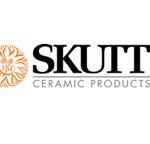Podcast: Play in new window | Download
Jack Orgill | Episode 1012
Jack Orgill, originally from Salt Lace City, Utah, is currently living in Logan, Utah. Logan received his associates degree from Tacoma Community College. Jack is currently in his final semester of his BFA degree with an emphasis in ceramics. His passion is collecting clay from the wild and using it for his ceramics.
SPONSORS
 You can help support the show!
You can help support the show!

Number 1 brand in America for a reason. Skutt.com

For all your ceramic needs go to Georgies.com
If you are out in nature digging up clay do you need any kind of permit to do something liked that?
It usually varies state by state so look at your local regulations and laws. The general rule of thumb is that it is as much as is within reason. So that being said, under a five gallon bucket.
When you are out hunting for wild clay how do you know that the earth you are looking at is actually a clay substance?
There are many indicating factors to what clay is. The best example that I could give would be looking at drainage marks. Anywhere that you see poor drainage or a delta-like pattern forming is something that can potentially be plastic or usable.
At what point do you start to actually bring it to the kiln? Is there processing that it has to be sent through before it is kiln ready?
Some materials need pre-processing before they go int he kiln, like if they are too large or if they are just stone. And so it does vary by material, the best indicator is actually just doing a small test in your bisque kiln.
When you start to test your work do you break it after the firing to see what the core of the clay looks like?
You have to do a certain level of testing or a certain amount of tests post firing to test for absorption, to test for vitrification, another one of those important ones especially in iron bearing materials is carbon coring. So yes.
How do figure out what temperature you can push the clay to?
I would say it’s incremental testing. So going from the raw material to bisque, then breaking it, analysis, thinking about that. And then after bisque you could fire it to cone 6 and then do the same round of testing. After that I would say stoneware temperature, cone 9 or 10.
When testing clays like this is there are fire technique that works best? Wood, gas, electric?
I would say go with what you would be potentially be firing those materials in. The most important word of testing being safety of your equipment. So putting that in a slab or making sure if it does run that you are planning for that.
Do you ever have to add other materials to the clay to make it more usable?
The easiest answer would be to say yes. In my personal practice I would like to get to the point on using a hundred percent local material and by doing that I have to practice that principle. So you could add things, that’s not how I would operate for my practice.
When you finish school what do you plan on doing with your making in the future? Do you see yourself a wild clay maker?
Yeah, I do see myself as a wild clay maker. It’s a great dream for me to be able to use material thar is specific to a region or specific to a certain locality because it’s not something that could be necessarily be replicated anywhere else.
Book

The Creative Act By Rick Rubin
Contact
Instagram: @jackorgillceramics



 GRPotteryForms.com
GRPotteryForms.com








